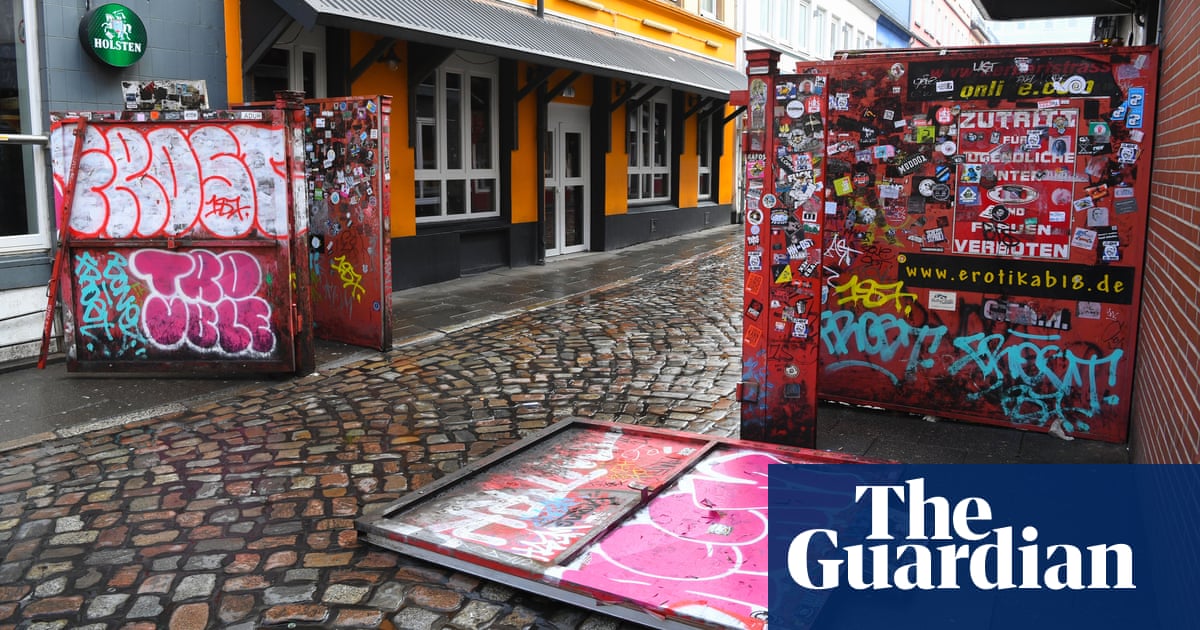World
Hamburg’s sex workers persecuted under Hitler to be commemorated

Sex workers in Hamburg’s historic red-light district who were persecuted under Adolf Hitler are to get their own memorial at Herbertstraße, a notorious street in Germany’s second city still blocked off to all but sex workers and their clients.
Few people, even residents, know that it was the Nazis who built the world-famous gates around the row of “houses of pleasure” in an attempt to shame sex workers while discreetly keeping business going.
St Pauli district council has answered the call of church leaders, community activists and local women working in the sex industry who agitated for Germany’s vaunted culture of historical remembrance to be expanded to include women such as Sophie Gotthardt, who was detained for “perversion” and only barely survived Auschwitz.
The memorial, which organisers hope to inaugurate by November, is modelled on the Stolpersteine “stumbling stones” – small brass plaques laid in cities and towns throughout Europe honouring individual Holocaust victims.
The marker will be embedded in the ground at the entrance of what is still a buzzing thoroughfare of brothels and sex shops, and include QR codes remembering the women of St Pauli whose fates are known.
Sieghard Wilm, the pastor of the Lutheran church that gives the neighbourhood its name, told the Guardian he had worked with residents and received the backing of local sex workers to launch the project aimed at “dignified remembrance”.
“Millions of people visit St Pauli and lots and lots of tourists every day stand in front of Herbertstraße and take pictures. I always found that cynical because I knew Nazis put up the gates,” he said.
Wilm called it “horrible” and a “crass contradiction” that the famously liberal district had until now excluded sex workers as an explicitly acknowledged group of Nazi victims. He wants to lift the stigma around these “long-forgotten” women and make them “visible” to all.
Herbertstraße, a narrow lane near the Reeperbahn, arose in the 19th century as a bawdy destination for local men and sailors on shore leave. Its just 60m-long haven for debauchery remains a seedy fixture of pub crawls and stag weekends.
The opaque metal gates, affixed with signs in German and English since the 1970s barring women and under-18s, block out prying eyes and feature on countless Instagram feeds. Rubberneckers who trespass have been known to be bombarded with water balloons and insults hurled from upper-floor windows.
The fences, however, were erected by the Hamburg Gauleiter, or regional Nazi party leader, in 1933 when the sex-for-cash trade on Herbertstraße was deemed a “sin and disgrace for the community”.
Between March and May 1933, Nazi officers arrested 3,201 “fornicating women” in Hamburg, Der Spiegel reported. Of these, 814 were taken into custody.
Although prostitution and striptease acts were officially banned at the time, St Pauli’s booming sex trade proved impossible to shut down, so authorities settled for making it invisible to passersby.
The women penned inside in the 1930s and 40s remained in the Nazis’ crosshairs as “female antisocial elements”. Many were imprisoned and deported to concentration camps. Others underwent forced sterilisation or were driven to suicide, researchers say.
The historian Frauke Steinhäuser says it is difficult to trace individual stories given the taboos around the sex trade then and now.
She told Der Spiegel she had attempted to spotlight individuals with experiences such as those of Gotthardt, who was born in 1912 to an impoverished family and worked as a prostitute from the time she was a teenager.
Amid a spreading crackdown under the Nazis, the Gestapo picked up Gotthardt for failing to undergo mandatory checks for sexually transmitted diseases. She went underground but was later captured and sent to Ravensbrück, then Auschwitz.
Forced to work at the extermination camp, she repeatedly attempted to kill herself. Jewish fellow detainees accused Gotthardt of mistreating them for which she was tried and convicted in Poland after the war.
When she was released, her lover Johanna “Otto” Kohlmann, whom she had known since their days on Herbertstraße, had already died.
After winning cross-party support, the approved measure in Hamburg earmarks €5,000 for the memorial, QR codes and an inaugural ceremony. Wilm said his initiative aimed to raise a further €15,000 to complete the project, including carrying out further historical research.
Today, an estimated 250 people offer sexual services for money on Herbertstraße, according to sector representatives. Prostitution is legal in Germany. Campaigners say that since the trade was liberalised in 2002, cut-price offers and a boom in sex tourism have fuelled rampant trafficking, leading them to call the country “Europe’s biggest brothel”.









